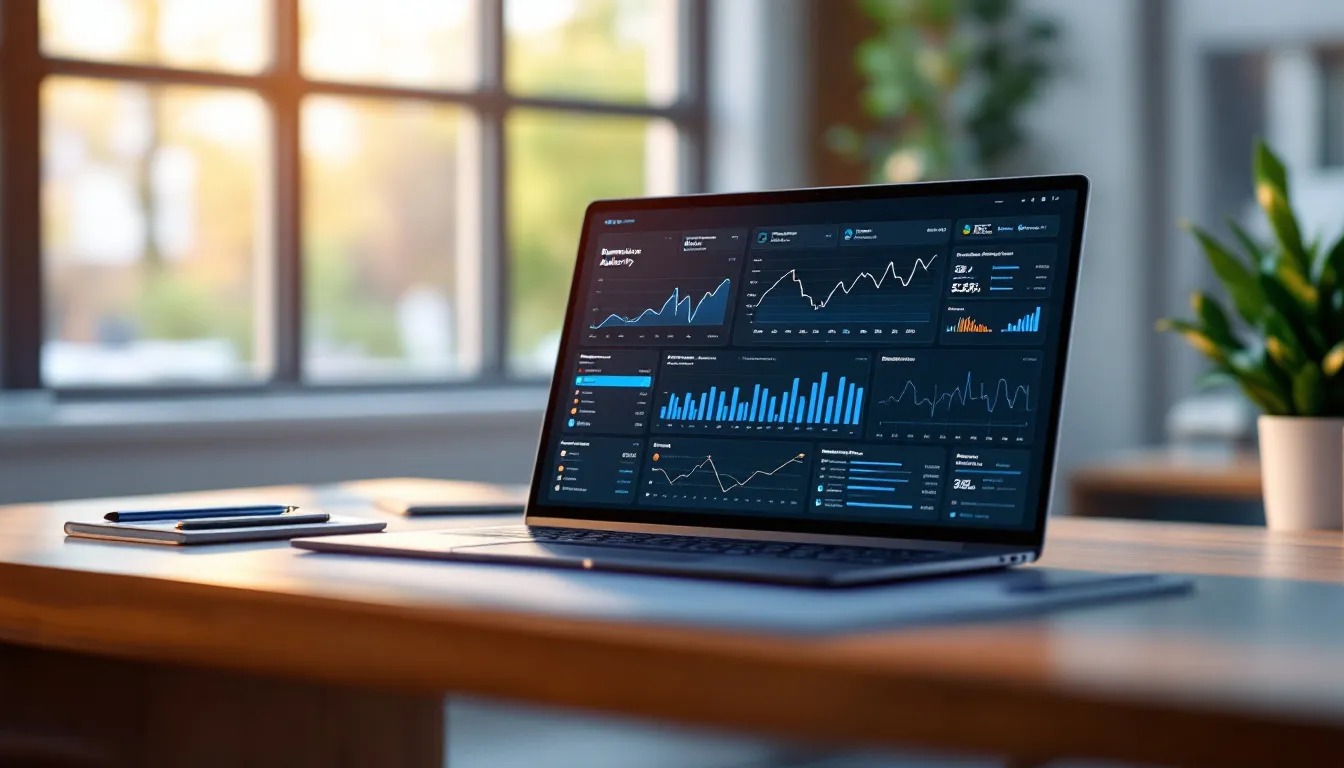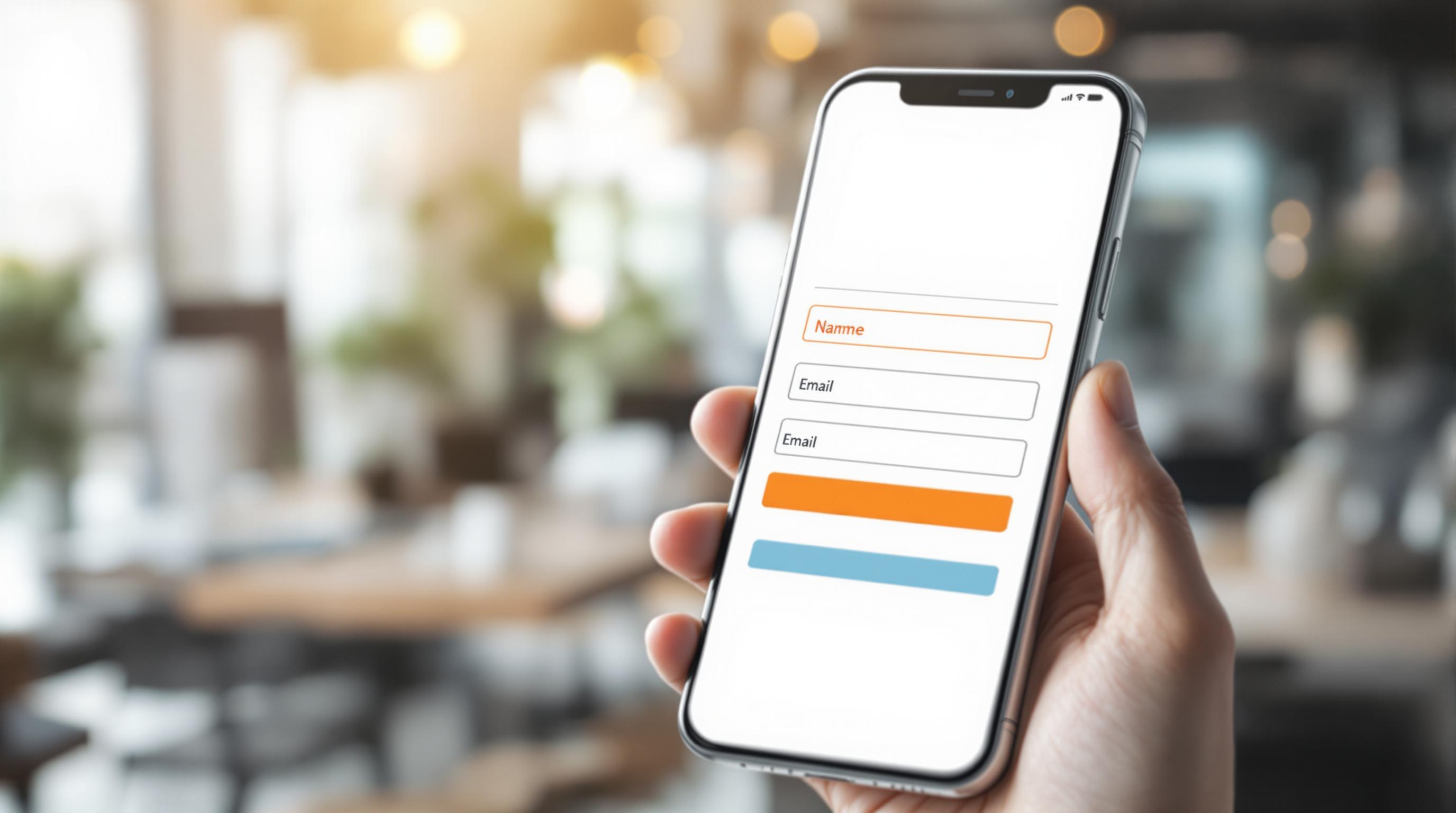- SEO Basics: Use optimized title tags, meta descriptions, and a clear heading structure.
- Content Quality: Write engaging, well-structured posts (1,500–2,500 words) with internal links and visuals.
- Technical Setup: Ensure mobile responsiveness, fast loading speeds, and clean URLs.
- Reader Experience: Create easy navigation, clear CTAs, and add social sharing buttons.
Quick Tip: Focus on mobile-first design and schema markup to boost rankings. Ready to dive deeper? Let’s break it all down.
How to Optimize Blog Posts for SEO 2024
SEO Basics for Blog Posts
Understanding SEO fundamentals is key to improving your blog's search rankings. Here's a breakdown of the essentials.
Title Tags and Meta Descriptions
Title tags and meta descriptions play a crucial role in both rankings and click-through rates. Google often rewrites meta descriptions - around 70% of the time - when they don't meet its quality standards.
For Title Tags:
- Aim for 55–70 characters in length.
- Place your primary keywords at the beginning.
- Add the brand name at the end, separated by a pipe (
|). - Use this format: Primary Keyword – Supporting Text | Brand Name.
"A title tag is simply a piece of HTML code that you can use to communicate with Google the title and purpose of a webpage."
For Meta Descriptions:
- Keep them between 100–150 characters.
- Naturally include primary and secondary keywords.
- Write in an active voice and add a clear call-to-action.
- Make sure the description aligns with the page's content.
Once you've nailed these elements, focus on organizing your content with a logical heading hierarchy.
Heading Structure
A well-structured heading hierarchy helps both readers and search engines. Google's Search Advocate John Mueller explains that "header elements are a 'really strong signal' that informs Google's understanding of a page's topics".
Follow this heading structure for your blog:
- H1: The main title (use only once per page).
- H2: Major sections of your content.
- H3–H6: Subsections, used in descending order as needed.
Now, let's talk about optimizing internal navigation.
Internal Links
Internal links are essential for guiding search engines and users through your site. Research shows that a strategic approach to internal linking can improve rankings.
Key Internal Linking Tips:
- Link Placement: Position important internal links near the top of your content to maximize their impact.
-
Anchor Text: Use descriptive, keyword-rich anchor text, but avoid over-optimization.
"If all the pages are linked to all the other pages on the website then there's no real structure there... That makes it harder for search engines to understand the context of the individual pages within your website."
- Link Distribution: Direct links to pillar content, related posts, categories, tags, and breadcrumbs to create a logical structure.
Content Quality Standards
Creating high-quality content is essential for engaging readers and boosting search engine rankings. Once you've mastered SEO basics and internal linking, it's time to focus on the finer details of your content.
Word Count and Reading Level
Studies suggest that articles between 1,500 and 2,500 words tend to perform well.
"Google has clarified that its primary goal is to provide users with the most relevant and helpful information. Simply hitting a target word count won't guarantee high rankings. Instead, focus on creating content that truly serves your audience's needs." - Kyle Roof
To make your content easy to read and understand:
- Use short paragraphs (2–3 sentences)
- Add clear, descriptive subheadings
- Incorporate white space for better readability
- Aim for an 8th-grade reading level
- Include internal links to relevant pages
You can also make your content more engaging by using optimized visuals.
Images and Videos
Visual elements like images and videos can significantly improve user engagement and page performance. Since images account for about 50% of webpage data, optimizing them is a must.
| Image Format | Best Used For | Advantages |
|---|---|---|
| JPEG | Photos, complex images | Smaller file size |
| PNG | Screenshots, logos | Higher quality |
| WebP | Modern browsers | 26% smaller than PNG files |
| SVG | Icons, geometric shapes | Scalable without losing quality |
To ensure your visuals don't slow down your site, follow these tips:
- Enable lazy loading to improve page load speed
- Use a Content Delivery Network (CDN) for faster delivery
- Compress images to reduce file size
- Write descriptive alt text for accessibility
- Match image dimensions to their display sizes
In addition to visuals, using structured data can make your content more discoverable.
Schema Markup
Schema markup helps search engines interpret your content more effectively, potentially boosting your rankings by up to four positions. Google's preferred format for structured data is JSON-LD.
Here are some key schema types for blog posts:
BlogPosting: Basic details about the blog postArticle: More detailed metadata about the articleAuthor: Information about the writerFAQPage: For question-and-answer sectionsImageObject: Metadata for featured imagesVideoObject: Metadata for embedded videos
"From our guidelines we want to make sure that the structured data you have on your page matches the primary element on your page." - John Mueller, Google
Use Google's Structured Data Testing Tool to verify your schema implementation. This ensures proper formatting and prevents errors that could hurt your search visibility.
sbb-itb-645e3f7
Technical SEO Setup
After optimizing content and navigation, technical improvements help your site perform at its best for search engines.
Mobile Design
With Google's focus on mobile-first indexing, your blog needs to work seamlessly on mobile devices. Here's how to get it right:
- Add the meta viewport tag to ensure proper scaling.
- Make touch targets (like buttons) large enough for easy tapping.
- Use at least a 16px font size for readability.
- Format content to avoid horizontal scrolling.
Test your site using Google's Mobile-Friendly Test tool. Adding features like hamburger menus or sticky navigation can make browsing more convenient. Also, improving your site's speed on mobile devices is key to better SEO results.
Loading Speed
Did you know a 1-second delay in page load time can reduce conversions by 7%? Speed matters. Here’s how to make your site faster:
- Enable Compression: Use Gzip to shrink file sizes by up to 70%.
- Optimize Code: Minify CSS and JavaScript to remove unnecessary characters.
- Configure Caching: Set expiration dates for static and dynamic resources to reduce load times.
URLs and Sitemaps
Keep your URLs clean and user-friendly. Use hyphens instead of underscores, keep them short (under 60 characters), and avoid stop words like "and" or "the." Avoid adding dates in URLs, so your content stays relevant over time. A logical URL structure also strengthens internal linking and enhances SEO.
"URLs are a stable foundation. Once set, changing them can cause more harm than good, leading to broken links and lost SEO juice - unless properly managed with redirects." - Jacob Kettner, CEO, First Rank
For XML sitemaps:
- Automatically update them with new content.
- Include only pages that can be indexed.
- Keep the file size under 50MB (uncompressed).
- Limit the number of URLs to 50,000.
Submit your sitemap through Google Search Console to ensure search engines index your pages efficiently.
Reader Experience
Creating a great experience for your readers does more than just keep them on your site - it also helps improve your SEO. A thoughtfully designed blog template should focus on making navigation easy and encouraging readers to act.
Menu and Page Layout
How visitors navigate your site affects how they interact with your content. Studies show that improving website usability can increase key performance metrics by up to 83%.
Here are some layout tips to follow:
- Keep the main navigation menu to seven items or fewer.
- Use clear, descriptive labels that reflect your content topics.
- Maintain consistent navigation across all pages.
- Add a search bar to help users find content quickly.
A clean and logical layout helps guide visitors naturally, making it easier for them to engage with your calls to action (CTAs).
Call-to-Action Design
CTAs are the bridge between casual readers and loyal subscribers or customers. According to research, personalized CTAs outperform generic ones by 202%.
Here’s how to position your CTAs for maximum impact:
| Location | Purpose | Best Practice |
|---|---|---|
| Above the fold | Grab attention early | Use bold, contrasting colors |
| Mid-content | Engage active readers | Provide context to reinforce value |
| End of post | Convert loyal readers | Add social proof for credibility |
In addition to CTAs, social media buttons can amplify user engagement and expand your reach.
Social Media Buttons
Social sharing buttons can play a big role in increasing your blog’s visibility. For example, The Wall Street Journal reports that up to 20.2% of their Twitter traffic comes from these buttons.
To make the most of social buttons:
- Place them prominently, like above or alongside your content.
- Stick to 3-4 key platforms relevant to your audience.
- Hide share counts until the post reaches a respectable number.
- Ensure buttons don’t disrupt the reading experience.
"Pick a prominent position: The more visible the button is the more people will bookmark and share your content, which will lead more traffic back to your site." - AddThis
It’s worth testing button placement and design to strike the right balance between visibility and page performance. For example, GOV.UK found only a 0.2% increase in shares after adding social buttons, highlighting the importance of measuring their specific impact on your audience.
SEO Tools and Resources
With over 300 SEO tools available, picking the right ones for optimizing your blog templates can feel overwhelming. To simplify things, here's a breakdown of some key tools, categorized by their purpose and cost:
| Category | Free Tools | Premium Tools (Starting Price/Month) |
|---|---|---|
| All-in-One SEO | Google Search Console | Morningscore ($49), Semrush ($139.95) |
| Technical SEO | PageSpeed Insights | Screaming Frog ($21.58) |
| Content Optimization | Rich Results Test | Surfer SEO ($99), Clearscope ($189) |
| WordPress Specific | Yoast SEO | Rank Math ($5) |
Here’s a closer look at specialized tools for technical SEO, content optimization, and WordPress:
"Google Search Console is among the best SEO tools." - Karsten Madsen, Co-founder & CEO of Morningscore.io
Morningscore now includes internal links data, five new health checks, and AI-powered features, all for $49 per month.
Technical SEO Tools
Screaming Frog SEO Spider is a standout for technical SEO. It provides detailed analysis to uncover structural issues that could hinder your site's performance.
Content Optimization Platforms
If you're focusing on content optimization, Surfer SEO ($99/month) is a strong option. It uses AI to ensure your blog templates align with current SEO practices.
WordPress-Specific Solutions
For WordPress users, Rank Math ($5/month) offers a comprehensive SEO solution, including schema markup and AI-powered features.
"If you're just getting started with SEO and find yourself overwhelmed by the complexity of heavy hitters like Ahrefs or Semrush, Mangools is a good way to get your feet wet." - Bryce Emley, Zapier
Content and Marketing

This platform provides a curated directory of tools for SEO and content creation. Whether you're looking for AI-driven blog writing tools or solutions for broader marketing needs, Content and Marketing helps you find resources tailored for blog template optimization.
"If you're serious about growing and monetizing your blog, you should be using SEO tools." - Mark Spera, Growth Marketing Pro
Conclusion
Building effective SEO into blog templates requires attention to technical details, engaging content, and an easy-to-navigate user experience. Research shows this strategy can drive up to 80% of trackable traffic, proving its importance.
Technical performance plays a major role. Did you know that 40% of users leave websites that take longer than three seconds to load? And with 63% of organic searches happening on mobile devices, optimizing for mobile is non-negotiable. Since 88% of consumers use mobile shopping apps, ensuring your blog works smoothly on all devices is a must. A strong technical foundation also supports high-quality content.
Content length matters too. Studies reveal that top-ranking Google pages average 1,447 words, emphasizing the need for thorough, well-organized articles. As Ronnel Viloria, Thrive's Lead SEO Strategist, explains:
"Internal links enhance the user experience and SEO by offering readers easy access to additional, related information right within the same website".
To keep your blog template optimized for SEO, focus on these essentials:
- Core Web Vitals: Fine-tune LCP, INP, and CLS for better user experiences.
- Mobile Responsiveness: Make sure your template performs well across all devices.
- Technical Infrastructure: Use schema markup, secure your site with HTTPS, and include XML sitemaps.
- Content Structure: Prioritize clear headings and internal linking to improve navigation.
With 82% of marketers reporting positive results from SEO efforts, following this checklist can boost your site's visibility and performance in search results.


